Toilet paper, oysters and life-changing moments: Our 10 top climate warriors revealed
In the beginning Simon Griffith’s market was mainly ‘inner-city hipsters’ but the great Covid-induced toilet paper shortage of 2020 hit and suddenly everyone had heard about Who Gives a Crap.
QWeekend
Don't miss out on the headlines from QWeekend. Followed categories will be added to My News.
They are building toilets in developing countries, saving the oyster population from extinction, passionately campaigning for ocean conservation, teaching big business how to vastly reduce waste and pollution and much, much more.
These 10 inspiring, young, green trailblazers work in various fields but share a deep desire to build a sustainable future for the planet
Anika Molesworth, 34, farmer, scientist and climate change educator
Anika Molesworth has a simple aspiration: to live on a planet that doesn’t need saving. Molesworth, 34, is a farmer, scientist, author and speaker determined to see a better future.
She is dedicated to raising awareness of climate change’s effects on farms, what actions can reduce emissions and how to adapt to changing conditions.
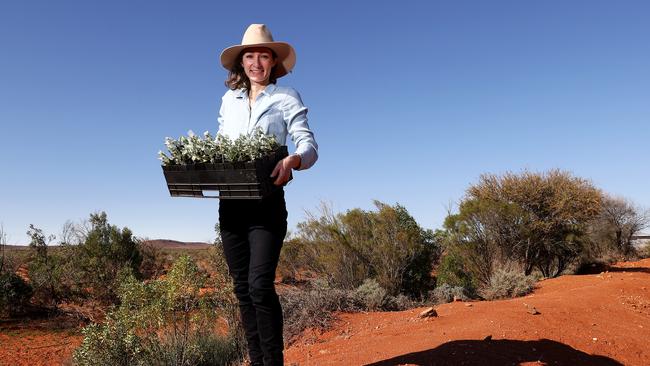
Molesworth moved from Melbourne with her family to a property near Broken Hill in Far West NSW when she was 12, but she credits the decade-long “Millennium Drought” that ended in 2010 with changing her life.
This is when she first “started to join the dots between the land, the climate and the food on my plate’’.
With a PhD in agriculture and environmental science, Molesworth was one of the founding farmers of a group called Farmers for Climate Action.
The group’s farmers from across Australia champion climate solutions, and are now 8000 strong.
She also founded a knowledge-sharing platform, called Climate Wise Agriculture, linking farmers and researchers.
Her work to raise climate change awareness has taken her to every continent, meeting with farmers, global leaders and royalty.
In 2017 Molesworth was a NSW Young Australian of the Year finalist and won the NSW Young Achiever award for Environment and Sustainability.
Her 2021 book, Our Sunburnt Country, examines the challenges and solutions of climate change and aims to “deliver a compelling vision for improving the food system’’.
“The fate of our planet and humanity are tied to our climate,’’ Molesworth says.
“If we allow the climate crisis to continue and get worse, we will have more frequent and intense bushfires, droughts and floods. We will face food shortages, social instability and inequalities. The future is bleak if we don’t get on top of this problem.’’
Molesworth says land managers can help retain and draw down carbon, storing it in soils and plants.
They can protect and rejuvenate biodiversity.
They can also assist the energy sector transition from fossil fuels via involvement with renewable energy projects.
Her motivation to make a difference comes with knowing her home, family, community, the farmers she works with and the food they produce are all under threat, and will be severely affected by the climate crisis.
Shalise Leesfield, 15, Ocean conservationist
Don’t let Shalise Leesfield’s tender age fool you. A tireless champion for ocean conservation, Leesfield, a Year 10 student in Port Macquarie, on the NSW mid-north coast, is a force to be reckoned with.
Leesfield has been lauded as one of Australia’s most effective sustainability ambassadors, winning the NSW government 2019 Environmental Citizen of the Year (at just 12 years old). The same year she was chosen as the only Australian representative at the Parley Ocean Uprise Youth Summit in Hawaii.

This year she was a finalist in the 2022 NSW Women of the Year Awards in the One to Watch category.
Leesfield has also been chosen by famed oceanographer Philippe Cousteau (and grandson of the legendary Jacques-Yves Cousteau) to be interviewed as part of his EarthEcho International Youth in Action program.
She has been a speaker at the Luminosity Youth Summit in Port Macquarie in front of almost 600 people, presented a TEDx talk in Newtown, and appeared on national television programs.
Leesfield’s passion for ocean conservation began when she collected and documented fishing line waste on her local beach at Lake Cathie.
She discovered they were monofilament fishing line and “one of the most harmful forms of marine debris”.
“It’s strong and invisible and gets tangled around animals and it can last up to 600 years without breaking down in our oceans. That devastated me,” she says.
Leesfield presented her findings to her local council, asking for special fishing line bins to solve the problem.
From an initial three bins, she then applied for an Environmental Protection Authority grant and won $77,000 for extra bins and educational signage.
She created her own environmental movement called Shalise’s Ocean Support and her attention now encompasses plastic waste in general.
Leesfield was born in Coffs Harbour but moved to Port Macquarie at age three.
In 2020, she earned her open water scuba diving licence, inspired by one of her heroes, oceanographer Dr Sylvia Earle.
Leesfield regularly dives with grey nurse sharks, and has big plans for a future in environmental science or politics.
“There are endless possibilities with the ocean,” she says.
“Growing up around the ocean and waterways, I just have a huge passion for it. I like the motto, ‘Think globally but act locally’ … if everyone around the world in their communities does something local, like I did with the fishing line bins, it makes a huge impact.’’
Nic Cooper, 37, Eco-tourism operator
Years spent as both tourist and tourism employee while exploring more than 75 countries confirmed two things for Nic Cooper.
He wanted to run his own tourism business and he was going to do things very differently.
“Tourism operators often come flying into destinations, whether that’s on a bus or a boat or whatever, and leave again very soon after without supporting the destination.
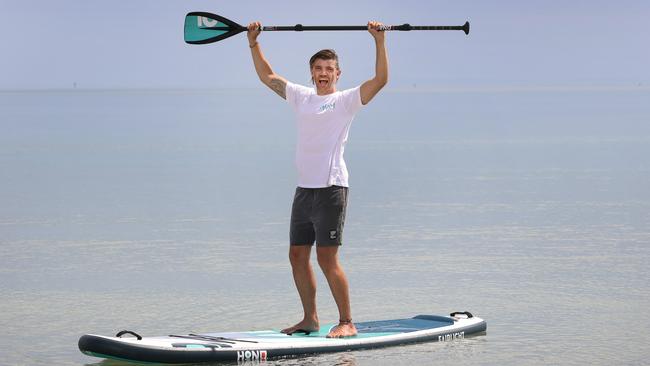
That’s what I really wanted to change when starting Wild Adventures Melbourne (WAM),’’ says Cooper, a UK-born adventurer who settled on the Mornington Peninsula after meeting Australian-Balinese event manager Shanti Raka, 28, and later marrying in Bali.
Cooper spent several years planning every aspect of his business, which combines adventure activities stand-up paddleboarding, hiking and mountain-biking with visits to hot springs, wineries, cafes and other local attractions, only to launch just as Covid hit.
Still, he continued, running WAM while working for another tourism-based organisation. WAM’s subzero waste operation, support of local reforestation and wildlife charities, commitment to local small business, right down to providing guests with reusable bottles and drinking water, eco-towels and reef-friendly, non-toxic sunscreen, saw it recognised as a finalist in the 2021 Victorian Premier’s Sustainability Awards.
“That gives us the confidence to keep pushing forward and doing what we can.
“We want to do things differently in a positive way and hopefully lead by example, hopefully to inspire change for others to go, you know what, it doesn’t have to cost more, it doesn’t have to be too difficult but you can be a positive, impressive, inspirational tourism operator.”
Ashleigh Morris, 33, and Jaine Morris, 34, Circular economy experts
It started as a conversation “about the world” between best-mate sisters.
Ashleigh, right, and Jaine Morris had both quit their jobs, disillusioned with the lack of difference they were making.
Ashleigh, 33, who studied environmental science at the University of the Sunshine Coast and University of New South Wales, had been working for a non-government organisation in Indonesia, holding brands accountable in palm oil supply chains.
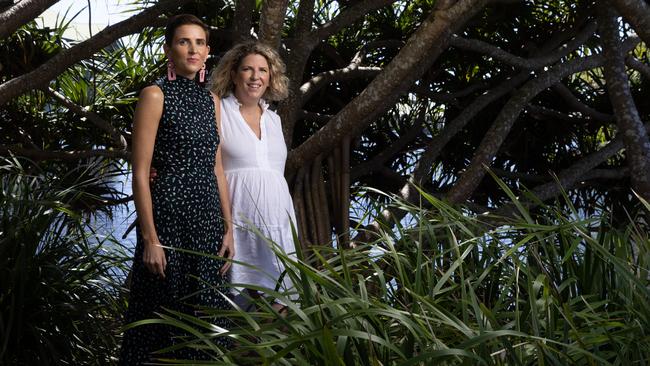
Jaine, 34, studied nursing at USC and had been working as a nurse on Mornington Island in the Gulf of Carpentaria.
“Ash started talking about the circular economy – a different way to think about how an economy functions,’’ Jaine, of Twin Waters on Queensland’s Sunshine Coast, says.
A circular economy (CE) moves away from a linear approach of using a resource, making a product and then discarding or recycling it.
Instead, it designs out waste and pollution in the first place.
It also keeps products and materials at their highest value for as long as possible and regenerates natural systems – soil, waterways, land – and also social systems by tackling equality and creating jobs for the disadvantaged.
The sisters began an experiment, Australia’s first CE pilot project, they called The Circular Experiment.
Engaging 45 businesses on the same Sunshine Coast street, the sisters worked for free and gave themselves six months to answer the question: what does the circular economy look like in practice?
Focusing on resource efficiency, they helped the businesses reduce their bills and improve their environmental impact.
Their experiment got the attention of property giant Lendlease who became their first client. Their company, now called Coreo, is considered a world leader in the booming CE field with clients including Rio Tinto and BHP.
Dan Adams, 35, renewable energy business owner
Naive idealism is a powerful tool in Dan Adams’s experience.
It’s what saw him secure U2 and Pearl Jam to headline the Make Poverty History concert he organised as a 19 year old, a campaign which helped convince then prime minister Kevin Rudd to increase Australia’s foreign aid budget.
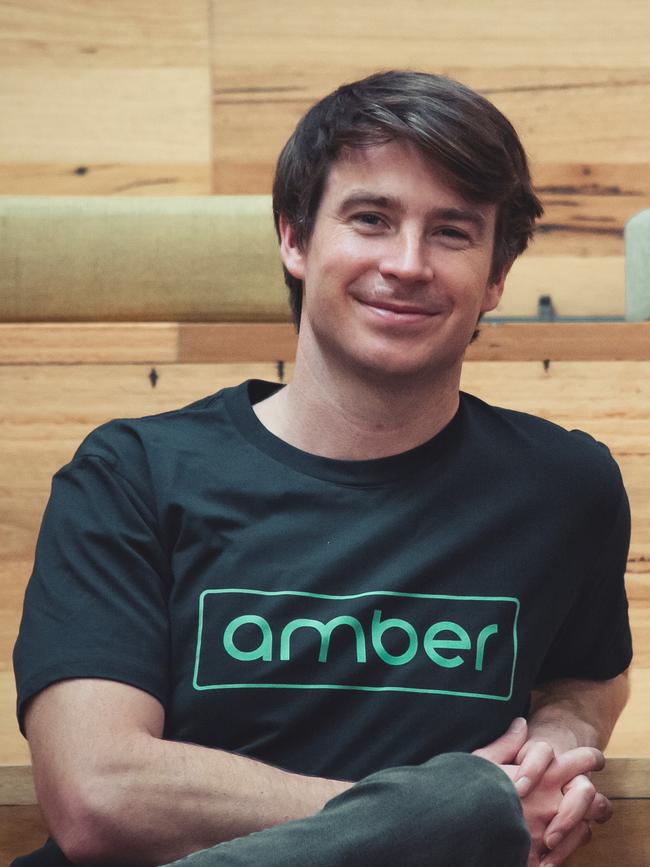
Now it’s helping Adams propel Australia towards 100 per cent renewable energy through Amber, the green energy provider he formed with best mate Chris Thompson, 32, in 2019.
“Naive idealism is very powerful because you go out there, commit beyond the point of no return and find a way to make it happen. I try to hold on to it because having faith that it is possible to create real change in the world is a really powerful motivator,” says Adams, a surfer and hiker who lives in St Kilda, Melbourne.
The 2008 Young Victorian of the Year ran social and environmental campaigns while completing a dual aerospace engineering and economic degree at Monash University, spent four years at Boston Consulting Group – where he met Thompson – moved to Hawaii to set up its community solar project and then back home to work on Tesla’s South Australia Virtual Power Plant project.
Amber customers pay $15 a month to run their homes on wholesale electricity rates and adjust their usage to times when solar and wind power are supplying the grid, in turn driving demand for renewable energy.
“This idea of using power when renewables are available is one of the most powerful levers to drive the renewable transition,’’ Adams says.
“Climate change is already happening so we need to move as quickly as we possibly can. I think we will reach a future powered by 100 per cent renewables in Australia and internationally faster than people think is possible.”
Angel Owen, 23, First Nations climate activist
For Butchulla-Woppaburra woman Angel Owen, the fight against climate change is as much about saving First Nations’ culture as the country her children love to explore.
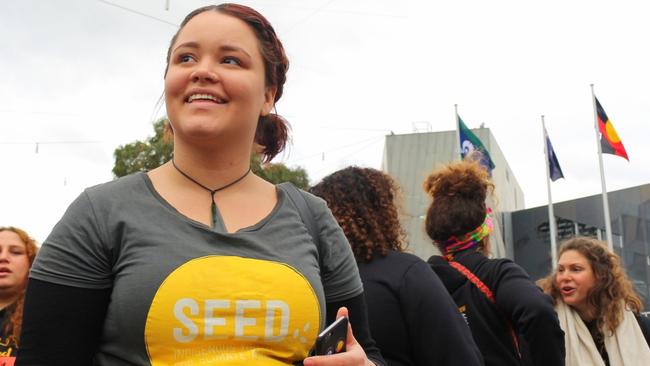
“Our people are having our stories changed due to the changing landscapes,” she says. “Longer hot seasons and longer cold seasons mean we can’t tell the story about this flower blooming on this tree equalling this fish being in the river, because it’s too late or too early.
“This is part of the impact of climate change,’’ says Owen, who lives in Dysart, central Queensland, with her partner, Wagamdagam-Kungarakun man, Tipasa Pearson, 27, and their children Tipasa, 2, and Euleilah, 1.
Owen was 15 when she and four other young people launched Seed Indigenous Youth Climate Network in 2014.
Her subsequent environmental campaigning, which saw her attend protests and rallies around the country, earned her the 2016 Bundaberg District NAIDOC Youth of the Year Award.
Today she is national organising director of Seed, Australia’s only First Nations’ led, run and voiced climate justice organisation, which has 15 staff, 350 active volunteers and upwards of 15,000 campaign supporters.
“With the work we’re doing, we can see the changes … in terms of engaging young people … and connecting the dots between climate justice and First Nations’ justice.”
Dr Carmen da Silva, 30 and Dr Julian Beaman, 34, Biologists and environmental educators
More than successful researchers, Dr Julian Beaman, from Flinders University in SA and Dr Carmen da Silva, from Monash University in Victoria, want to be storytellers, inspiring others to join them in discovering, protecting and sharing nature’s wonders.
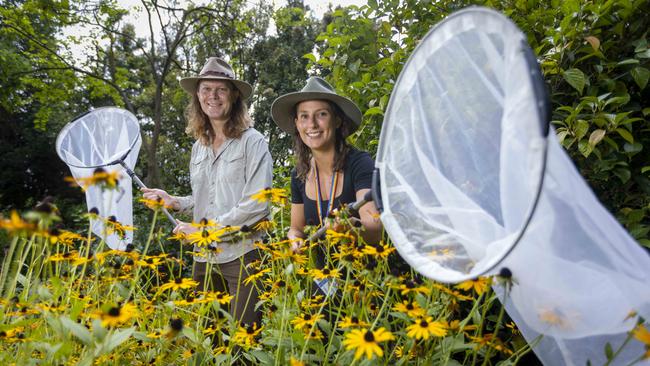
Canadian-born, Adelaide-raised da Silva met Sydneysider Beaman in a lab at University of Queensland, where she started researching the effects of climate change on native bees and Beaman was studying cockroaches.
And just as her biologist parents inspired da Silva and a primary school mum leading a citizen science project in a creek inspired Beaman, the married duo wants to continue the tradition.
“If you look at the people who’ve made a big impact in terms of (conservation) communication and engagement – and I don’t put us in this category – you’re talking about the David Attenboroughs and Steve Irwins, so ultimately it’s about the human connection and storytelling,’’ says Beaman.
“As scientists, one part of our job is to discover knowledge but it’s also our job to engage people and bring them along on that journey …. for us, we’re really passionate about getting young people and children, in particular, really excited about the natural world,’’ he says.
They are now part of Flinders’ Kangaroo Island Passport to Recovery Program, designed to include tourists and citizens in about 12 scientific projects while helping stimulate economic recovery after the devastating bushfires in 2019.
Beaman will focus on the health of the koala population, as well as working with da Silva on her native bee research.
Sam Elsom, 40, Green agriculture entrepreneur
They’re pretty laid-back in the tiny Tasmanian town of Triabunna (pop approx 300) but when Hollywood star Zac Efron recently turned up with a film crew in tow, it caused quite a stir.
Efron was there to shoot part of his Netflix Down to Earth environmental documentary series, and talk seaweed with Sam Elsom, whose company Sea Forest is a green trailblazer.
It’s grown from a team of three in 2019 to a 44-strong, salty crew of scientists, researchers, engineers, boat skippers, deckhands, processing and maintenance staff.
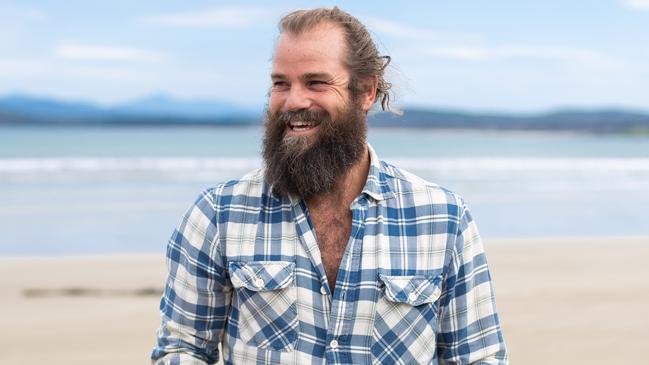
Their mission? To cultivate, harvest and distribute seaweed as an alternate food source for the livestock industry.
“I’d read some research carried out by the CSIRO which fed 30 different varieties of seaweed to cattle to understand its impact on methane production,” Elsom says.
“Their team of scientists discovered one native red seaweed could virtually wipe out methane emissions from livestock production, and because about 15 per cent of global emissions come from ruminant livestock like cattle and sheep, this discovery had significant environmental potential.”
The problem at the time was no one knew how to grow it. Enter Elsom, who grew up by the ocean at Queensland’s Noosa Heads and now spearheads the operation to grow that distinctive red seaweed, asparagopsis.
Like many other of the world’s hundreds of species of seaweed, asparagopsis is a natural climate saver; it grows very rapidly, deacidifies salt water, takes in carbon dioxide and gives out oxygen through photosynthesis, and perhaps most importantly, cows are far less flatulent when they eat it.
He and his team (including 10 of the world’s leading aquaculture scientists) now grow asparagopsis on repurposed mussel farms on Sea Forest’s 1800ha lease off the coast of Triabunna.
The Sea Forest project has an added side bonus too – the rescue and rehabilitation of Tasmania’s dying giant underwater kelp forests.
“There’s only about 3 to 5 per cent of the original forests left in Tasmania,” Elsom says.
Simon Griffiths, 39 philanthropist and business owner
So, who gives a crap?
Simon Griffiths, does – so much so that when Griffiths first heard back in 2010 that 2.4 billion people were living without adequate sanitation globally, and that sanitation-related diseases and conditions such as diarrhoea were the worldwide, number-one killer of children under five, he decided to do something about it
Griffiths, then 27, and working in finance after studying engineering and economics at the University of Melbourne, had an idea.
Why not create a sanitary product that directly helped the very people who needed hygienic sanitation the most? And so Who Gives A Crap, a company that makes 100 per cent recycled toilet paper and donates 50 per cent of its profits to help build toilets and improve sanitation in the developing world, was born.
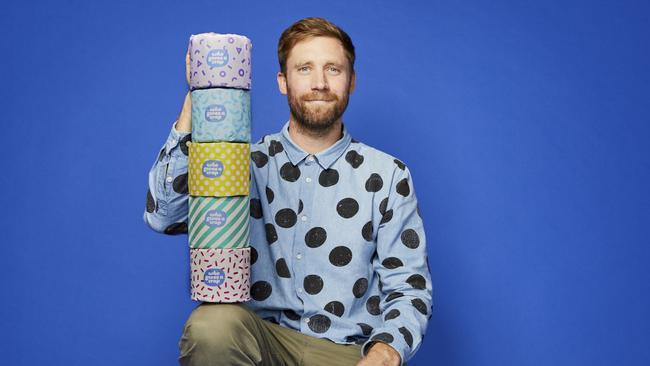
It’s been astonishingly successful with Griffiths, now 39 and married with two children, thrilled that it has grown from a small market of “mostly inner city Melbourne hipsters” to a business that sells 28 rolls of toilet paper every second worldwide.
“When I had the idea, I called three friends and they all said, ‘Yes, great’, but the third one said, “Can I help?” and that’s how Jehan (Ratnatunga) got involved,” he says.
Griffiths, Ratnatunga and third founder, Danny Alexander, spent about three years finessing the idea, launched a crowd-funding campaign in 2012, and the first roll rolled off the production line in 2013.
“What we found is that a lot of people wanted to help the planet, but weren’t too sure how, and I think our idea took off because it was a simple way to do so,” Griffiths says.
Since then, Who Gives A Crap has donated $10.88m (and counting) to partners such as WaterAid and other local organisations in places like India, East Timor, Kenya and northeast Cambodia. Griffiths says the company has doubled, or tripled in size every year since its launch, and it now sells more products in Europe, United States and United Kingdom than in Australia.
In 2020 when Covid saw toilet rolls vanish from supermarket shelves, the company sold out of product.
Who Gives A Crap now has 165 staff globally, and its founders have visited many of the countries where its donations have made a huge difference.
“We have visited villages both before and after their access to safe sanitation has been achieved, and the difference, particularly with the kids, is just so wonderful to see,” Griffiths says.
Part of Who Gives A Crap’s success is due to its irreverence and (pardon the pun) cheeky sense of humour.
That 2012 crowd-funding campaign was launched (and is still available to watch on the company’s website) with Griffiths, pants around the ankles, on a toilet set up in the middle of an empty warehouse, vowing to remain there until the $50,000 needed to fill those warehouse shelves with the first bulk order of toilet paper was raised.
The colourful toilet rolls and packaging also feature cheeky humour congratulating their customers for their eco-purchase or, to put it in the Who Gives A Crap vernacular:
“Give yourself a pat on the bum.”
Dr Dominic McAfee, 39, oyster conservationist
A “high school dropkick’’ who failed biology and spent most of his 20s backpacking around the world, Dr Dominic McAfee eventually realised he needed to turn his passion for nature into a career.
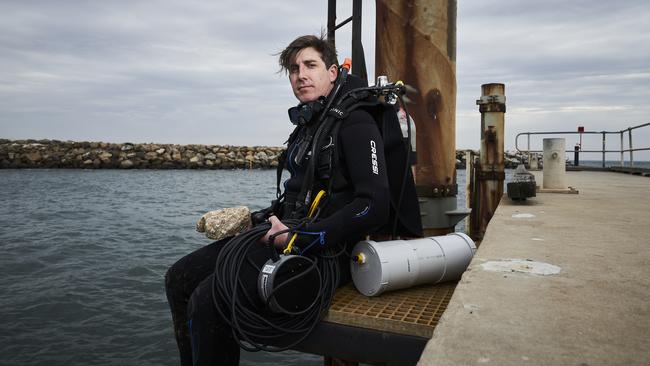
He was accepted into Sydney’s Macquarie University, starting his undergraduate studies aged 26.
Perth-born, Adelaide-based McAfee has since studied glaciology and volcanology but now concentrates on oysters.
His work with other scientists on the Shellfish Reef Restoration Network won the NSW Environment, Energy and Science Eureka Prize for Applied Environmental Research.
Since the network was formed in 2015, 33 large reef restorations are under way across the states, with a further 10 to 12 to be established within the next year.
“It’s one of the biggest marine restoration projects in Australia … and has the potential to be one of the great conservation success stories on land or in sea, because we are seeing that within just a year or two of putting in foundations, building rocky reefs, these oysters are coming back and thriving,’’ says the University of Adelaide researcher, adding European organisations were keen to replicate the success along their own depleted coastlines.
“We weren’t sure until the rocks went into the water whether the little baby oysters out there looking for a place to live would find these reefs and settle on them in large enough numbers to be a success, so it’s very satisfying.’’
McAfee is now working on “seductive sound” studies with marine biology, testing the effect of everything from Mozart to recordings of seagrass meadows and ocean shipping on oysters.
“We’ve built speakers, put them on the reef and shown the oyster larvae swims towards the sounds we’re playing of a healthy reef – which some people liken to the sounds of crackling bacon frying, the sounds of snapping shrimp – and it accelerates the rate at which they find and settle and live on our reefs.”


